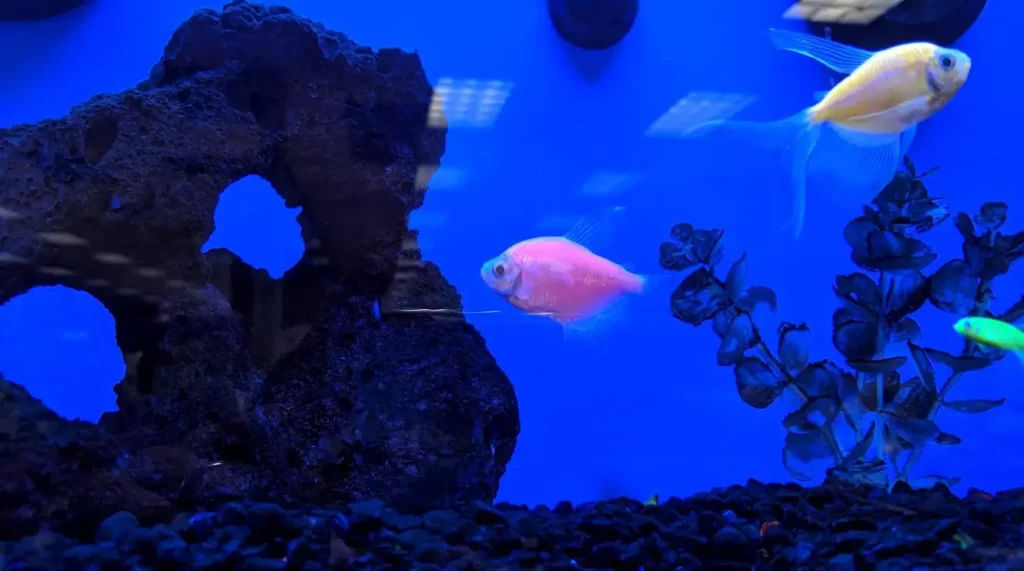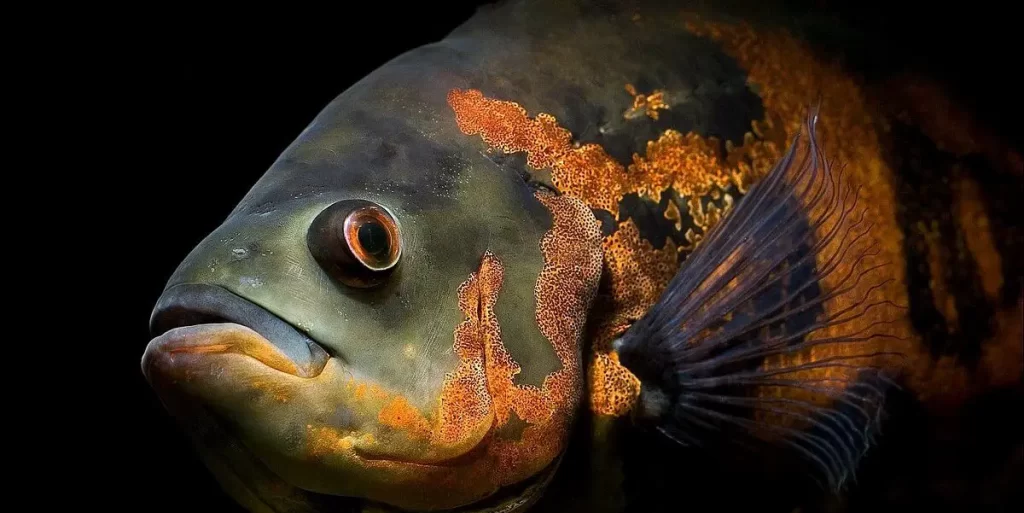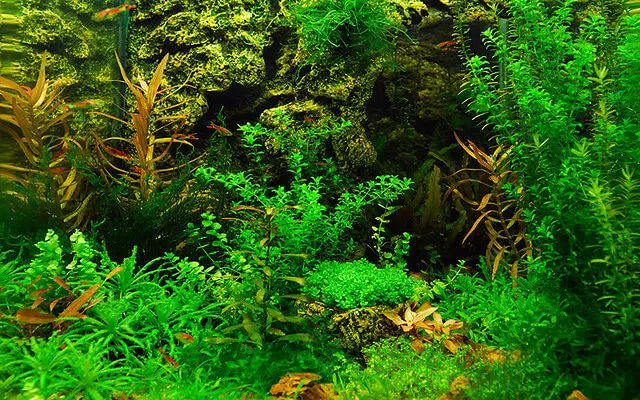GloFish are the brand of genetically modified freshwater fish. Zebrafish were the first Glofish that were available on the market and now are available in various colors. Scientists insert a fluorescent protein gene into the embryo before the fish hatches. Fluorescent GloFish are bred to protect the environmental pollutants; scientists can determine when a waterway is contaminated. The fluorescent protein gene produces a fluorescent color. They are derived from marine organisms, and they occur naturally. Once a gene goes into the genome of the embryo, the developing fish pass on the same genes to its offspring. Due to this, the scientists don’t have to add a fluorescent gene to every fish before they hatch. They bred from their offspring.
I have been keeping GloFish for more than ten years in my tank. I have always been fond of the color of GloFish. Since GloFish are genetically modified, they are not as strong as other non-genetically modified fish. Hence, the process to set up a tank for GloFish is a bit different than setting up a tank for other fish. In this article, I have written all the essential steps needed to set up a tank for GloFish correctly.
A basic way to set up GloFish Tank:
- First, choose the GloFish Breed you want to keep,
- Now, pick up a good tank size. The bigger the better (Here is a golden rule: one inch of fish requires one gallon of water).
- Place the tank on a flat surface (an aquarium stand). It’s better to use styrofoam beneath the tank for extra support.
- Wash your decorations and substrate and decorate your GloFish Tank.
- Light is the most important part of a GloFish tank. Use a black light to pop up the GloFish color.
- Fill up the GloFish tank with dechlorinated water. You can use API Water Conditioner.
- Place a heater and a filter to create an optimal water parameter for GloFish.
- Let the tank water cycle (Nitrogen Cycle) before adding your GloFish. (it takes 3 to 4 weeks for aquarium water to fully cycle.)
How to choose correct Fish Tank and Accessories for GloFish
Choosing fish tank and accessories for GloFish depends upon different factors like Tank Shape/Size, Substrate, Decoration, Background, Lighting, etc. Let me discuss in detail on these factors.
Picking Your GloFish Tank
It’s the first step towards making your tank look amazing. If you want to set up a tank for GloFish elegantly and beautifully, then this section is a must for you.
Shape/Size of the Tank
What tank shapes and sizes work best for the GloFish tank? You should avoid the GloFish branded tanks at all costs as they don’t have enough volume and length for all the GloFish species to thrive. As far as tank shape goes, it mostly up to your personal preference, size requirements, and budget. I do not recommend you to use hexagonal-shaped tanks whose length is less than 35 inches. Hexagon shape reduces the overall length of the tank. Hence reducing the space for your GloFish to play around.
I prefer regular lighting with blue accents because such lighting easily covers your entire tank evenly regardless of the tank shape. If you are going with blue lighting, your tank shape choice is more important as it dictates how much extra you’ll need to spend on lighting to light it fully.
For starters, you can start with a 20-Gallon aquarium. It’s a decent-sized beginner’s aquarium.
Substrate
The two most popular substrate for GloFish is sand and gravel. The sand keeps all waste on the top where it’s easy to siphon out, but also it looks dirty very fast. The gravel won’t look dirty, but you have to arrange it on every water change. Both sand and gravel work perfectly with GloFish; the choice is personal.
You can also sprinkle marbles or other jewel type stones for extra interest along the substrate if you like. Do this after you are done with another decoration layout, or you’ll constantly be digging them out of the substrate.
Decoration
For those who are using normal lightings, this is more dedicated to those who are using the blue lighting. The general rule is the more fluorescent, transparent, and iridescent fish is, the more likely it will show up well in the blue lighting setup.
Background
A black does very well at keeping the GloFish from being distracting most of the time. You can also use any background like blue, of any waterscape; blue also helps to highlight the color of the fish. A 3D rock background looks excellent if your aquarium light can produce a shimmer effect.
Lighting
As for lightings, you can grab any of the normal led light that is designed for your aquarium or you go for the blue led lights. For the fish color to pop up, you will need to add a black light.
So, for the day time, you can add the blue led light that is mixed with white light and when you want to see the fish neon color, you can turn on the blacklight.
Do GloFish need a Filter?
Yes, the GloFish will need a filter. If you plan on keeping GloFish in a small fish tank, you are recommended to get a sponge filter. For larger aquariums, you can use Aqua Clear Power Filter. GloFish needs a filter to keep the water free of ammonia, nitrites, and other contaminants. If fish are not provided with adequate filtration, it will harm their health and eventually lead to their demise.
Why do GloFish Need a Filter?
GloFish need a filter for filtration:
- Mechanical filtration
- Biological filtration
- Chemical filtration and
- Water flow
Do GloFish need a Heater?
GloFish will need a heater to keep them stay healthy and active. Danio is the only species of GloFish that you might be able to keep in an unheated aquarium.
- GloFish Tetra comes from warm water like river basins in South America, and they will need to be kept in a heated aquarium to mimic their natural environment. Optimal water temperature would be 72 to 82 degrees Fahrenheit with a 50-watt heater in a 10-gallon tank and 100-watt heater in a 20-gallon tank.
- GloFish Danio is the only one of few GloFish that can tolerate cooler temperatures. The optimal temperature would be 64 to 75 degrees Fahrenheit with a 100-watt heater in a 20-gallon tank.
- GloFish Tiger Barb is semi-aggressive fish that live in warm tropical waters in Indonesia and Borneo; you will need to keep the heater. The optimal temperature would be 74 to 79 degrees Fahrenheit with a 150-watt heater in at least a 30-gallon aquarium.
- GloFish Sharks are Rainbow Sharks, and to match the temperature to their native habitat, you will need to heat your aquarium. The optimal water temperature would be 72 to 79 degrees Fahrenheit with 150-250-watt heater in 30 to 50-gallon tank.
How to Setup your GloFish Tank and Accessories?
You need the correct technique to set up a tank for your GloFish is correct fashion so that your GloFish gets a proper environment. If you are a beginner aquarist, then I recommend you to read the article on “Fish Tank Setup For Beginners.”
Following are step by step guide to assemble and install your GloFish Tank and Accessories:
Adding Gravel and Water and other decor items
- Thoroughly wash aquarium gravel, ornament, rocks with warm water and then add them to your tank
- You must not use soap or detergents as they are very toxic to your fish
- Put a colander over a plastic pan or bucket and add water to wash the gravel. First, stir the gravel and then drain it. Repeat this process until the washed water is clear.
- Fill your tank approximately one-third full of room temperature water from a clean bucket
- Don’t pour water directly into gravel. Place the plate or saucer above gravel first and pour the water onto a plate or saucer. It will help keep the gravel in place.
- Add a water conditioner to dechlorinate the water. Chlorine is not fine for your fish.
- Connect airline tubing from the air pump to any air outlets inside your tank like air stones or decorations.
- Locate your air pump underneath your aquarium safely by using an aquarium valve.
- Aquascape with live or plastic plants.
- These should be arranged to hide your equipment.
- You should make sure the water is warm enough if you are adding live plants. Also, you should keep live plants moist until they’re planted.
- Add the rest of the water.
- Then you can add the rest of the water into the tank, leaving some air space between the water and the cover.
Setup Filter and Heater
Filter and Heaters are very crucial components to set up a tank for GloFish properly. Since GloFish are genetically modified fish, they are very sensitive to surrounding temperature and pollution.
- Don’t forget to set up your filter and cycle the new tank if you are using:
- Any outside filters:
- Fill them with filter materials
- Position them according to the instructions
- Make sure it is filled with water
- Hang on tank” filter which has a pickup tube:
- Extend the tube almost up to the bottom of the tank
- Make sure to open the filter lid and fill the filter with water to prime the pump
- Any outside filters:
- Secure the submersible heater near water flow and place the thermometer as far away from the heater as possible
- Make sure you have a thermometer that’s easy to read.
- Plug the thermometer only after it is in the water.
- Plug-in power filter, heater and air pump then start them up
- Do not switch on the heater when it’s not immersed in the water. If you do so, the heating element can malfunction and overheat, and the glass tube can shatter if placed in water while hot.
- Check the air outlets then adjust the settings.
- Make sure that the water is flowing properly through your power filter.
- Adjust the heater to the proper temperature, and you must know that it will take 24 hours for the temperature to stabilize, and you may have to adjust your setting.
- You shall need to wait 24 hours to ensure all types of equipment are working properly before adding fish.
- Check the temperature and conditions after a few hours.
- Due to harmless bacterial growth, water in new aquariums will often turn cloudy for a day or two, which should disappear naturally.
Perform Fishless Cycle
- Once you properly set up the tank, the next thing to do is to perform a fishless cycle on your tank. The completion of the Fishless Cycle may take from week to month. During this period, constantly monitor your tank water conditions.
- Due to harmless bacterial growth, water in new aquariums will often turn cloudy for a day or two, which should disappear naturally.
- Check the pH and hardness of water using the Tetra Test Kit.
- The fishless cycle is complete after you tanks pH, hardness, ammonia, nitrite, and nitrate level are correct.
- Final Step
- Your new aquarium is fish safe, fish ready after completing the above steps.
- The final step would be introducing your pets (fish) to the new home.
How to Introduce your GloFish to its New Tank?
It can be stressful for fish to introduce into a new tank/home. It will not only be completely unfamiliar for your new fish, but the water will likely be of a different quality than they are used to living previously. You have to include certain measures when introducing your new GloFish to your aquarium tank to keep your fish safe and healthy. Read the full article on how to acclimate your fish to know about acclimating the fish before adding them to your tank. When you are ready to add your fish into the aquarium, follow the following steps:
- Take the sealed bag in which your fish came in And float it on the surface of the aquarium’s water.
- Let the bag sit for ten to fifteen minutes. After that, open the fish bag and add about one cup of your tank’s water to the bag. Reseal the bag and let it float again for fifteen more minutes.
- Repeat this step until the bag gets full. After that, transfer the fish from the bag into your tank. You can use the net to do so because we don’t want to add the water from the bag to our tank.
After this, your fish is free to swim around your tank and explore its surroundings. Turn off your aquarium lights for a few hours as your fish gets adjusted and look out any signs of aggression in your fish population.
Buying Tips
Major pet stores and many independent stores sell GloFish. You can find a store near you. Make sure you consult and get your query resolved if you are a starter from the storekeeper or any expert.
My tips for the Beginner Aquarists
If you are a beginner aquarist, then please read these below-mentioned points before you set up a tank for GloFish.
Talk to an expert at the fish store to make sure the aquarium fish species you are adding be compatible with your existing aquarium fish species.
Make sure that the fish you are adding to your aquarium the tank is of the proper size, and they won’t grow too large for their new environment.
Test your water quality before adding new fish, chlorine the level should be at zero. Try to match your tank water pH to that of the fish the shop’s from where you bought the GloFish.
Make sure your tank has plenty of hidden spaces for your fish to hide. Having items like plants, rocks, or other decoration objects provide you fish a good place to hide. This will help your fish to be less stressed.
If your aquarium contains other fish too, then feed those fish first before adding any new fish. Doing so will make your existing fish will be less aggressive, and there is less chance that it will attack the new fish.
Before adding your new fish, you should turn the lights of your aquarium off. It is also better if you dim the lights in the room. This will create a less stressful environment for your fish.
Things to Remember
Diet
Well, a balanced GloFish diet consists of flakes, pellets, frozen-dried food. Vary diet to make sure your GloFish gets a proper nutritionally balanced diet. Include foods that are high in carotenoids and beta carotene. These ingredients help to maintain GloFish’s vibrant colors.
Feeding
Feed a small amount twice a day, no more than fish will eat in 1 to 2 minutes.
Housing
Aquarium size should be appropriate and provide plenty of substrates, hiding places, and rock. Water quality should be maintained, and parameters are critical to the health of aquatic life.
Characteristics
GloFish are available in different bright colors. They are schooling fish; hence are recommended keeping in schools of five or more.
Signs of Healthy Fish
Clear eyes, healthy appetite, bright, and even coloring are the signs of Healthy Fish.
Red Flags
loss of color or appetite, spots or fungus on body or mouth, labored respiration, cloudy eyes, weight loss, bloating and frayed fins
Aquarium Size
5+ gallons is ideal for your GloFish.
Temperature
72-82 degrees Fahrenheit is an ideal temperature for your GloFish.
Things to Avoid
- Selection of aggressive tank mates
- Overfeeding
- Negligence in aquarium sanity and maintaining the environment
- Over populating the tank
Conclusion
All GloFish are captive-bred, and the fluorescent color comes with natural breeding because they are a type of danio, barb, or tetra; their care requirements are the same. The average adult GloFish size is up to 2 inches long. The average life span is up to 3 years with proper care. They are a fascinating genetically modified organism that has become very popular as a pet but may also have scientific use. Since they are genetically week due to modification on gens, you must be extra cautious about setting up a tank for GloFish.
They pose no threat to the environment as they most likely cannot survive in the conditions of the wildlife ecosystem and pose a very slim risk of invading another aquatic ecosystem. GloFish are unique because they are the only genetically modified organism to be sold as a pet, and this provides people with great enjoyment. Lastly, GloFish further develops and may be helpful in the future betterment in our environment through being able to detect pollutants and being temperature indicators. GloFish is a unique genetically modified organism, and it should be approved for sale in other countries and also should be continually researched.
This concludes my article on How to Set Up Tank for Glofish. I hope I answered all your questions. If you have any queries on how to set up a tank for GloFish, then feel free to leave the question on the comment below. For more awesome fish related articles, do visit my website Fishkeeping Guide.
Reference
Image Credit: https://www.flickr.com/photos/mliu92/43288783241/






